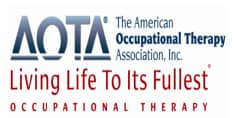 |
“A society in which everyone ages with dignity and purpose and in which AARP helps people fulfill their goals and dreams.”—The AARP Vision
As a Baby Boomer (and part of the generation that never planned to grow old), I’ve never really thought too much about aging..until recently, when I celebrated the advent of my 50th birthday. In addition to a lovely bouquet of roses from my husband, the obligatory black balloons from my friends, and dozens of cards from “sympathetic” well-wishers—I received my AARP card. A rite of passage had been observed.
Not long ago, the little red and white card was considered entrée into the rocking chairs and knitting needles club, but that was a generation ago. Many things have changed, including the AARP. As an editor and reporter whose beat has been the medical arena for almost a decade, I have had the opportunity to watch AARP evolve into a key public resource for individuals of all ages seeking information on the most pertinent issues affecting American health care.
In 1958, retired schoolteacher Ethel Percy Andrus, PhD, established the American Association of Retired Persons (now AARP), with the intent to promote positive aging practices, such as assisting individuals of retirement age to find affordable health insurance, benefits, and pharmaceutical discounts. Now, as a nationwide organization of more than 35 million members (and growing daily), AARP provides access to valuable information not only for its members, but the general public, and addresses the most pervasive issues facing Baby Boomers and other aging adults not the least of these being long-term and basic health care, legislative issues, and financial planning.
|
To learn more about the services and benefits offered by AARP, go to www.aarp.org. |
|
As part of its expanding presence, AARP provides its over-50 clique with information on legal counsel for low income individuals, supplemental health insurance, long-term health care plans, and work training programs. The organization also provides one of the most comprehensive Web sites available at www.aarp.org, offering news, information, and contact portals and links on everything from medical legislative changes to health problems affecting aging individuals (and where to find assistance) to housing and money issues to maintaining a healthy lifestyle and making wise investments. (There are also opportunities to take advantage of dining and travel services, and discounts at select businesses—I particularly enjoyed this month’s AARP offer through Barnes & Noble.)
As my generation enters its golden years, we can hope they contain unprecedented good health, energy, and expectations for longevity (as Baby Boomers, we believe this is our birth right). However, the reality will not be so for many. For all of us, but especially those who will face illness and long-term health care issues, the advocacy efforts of AARP will truly be appreciated—especially as the organization teams with such medical professionals as physical and occupational therapists to educate the government decision-makers on the need for some level of accessible medical and rehabilitative care for all individuals regardless of age, race, and socioeconomic background.
On reflection, I think my AARP card was one of the best gifts ever!
—Rogena Schuyler Silverman





